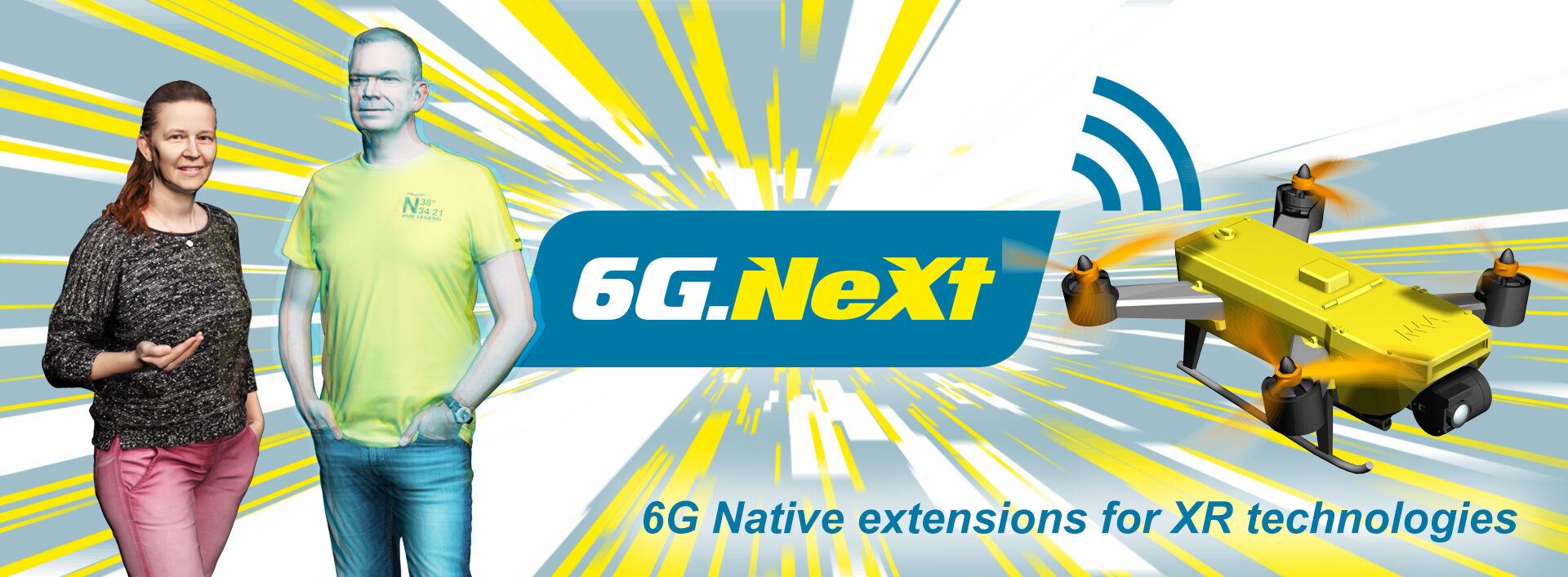Future industrial- and media services and applications, especially in the area of multimedia, are expected to generate an enormous amount of data for industry, media and private users, that will require fast and more reliable transmission than is possible with today’s mobile networks. The funding project “6G Native Extensions for XR Technologies” (short title: 6G NeXt) aims to develop an infrastructure with an integrated network and software layer to enable new processing speeds and to implement the dynamic distribution of complex computing tasks (split computing). The latest software technologies combine computing and connectivity to form an overall system with capabilities that go far beyond the edge cloud familiar from 5G.
In the pioneering 6G NeXt project, an infrastructure is being developed to identify the requirements of a future 6G network by researching and implementing two challenging use cases from innovative and forward-looking industries in Germany using new system architectures. The performance and efficiency of a new network generation will be determined by high-performance radio interfaces with application-optimized radio protocols as well as by ultra-fast software stacks, intelligent media processing and the deep integration of artificial intelligence (AI) to optimize the overall system. The focus of the project is on an implementation with open interfaces, easy integrability, sustainable development and optimized economic efficiency to achieve a broad social acceptance of the new 6G technology.
Objective
6G NeXt aims to develop a scalable, modular and flexible infrastructure to enable a variety of industrial and end-user use cases, which extent the requirements of today’s 5G network in terms of intelligence, performance and efficiency.

